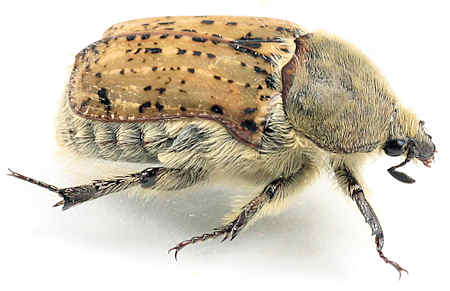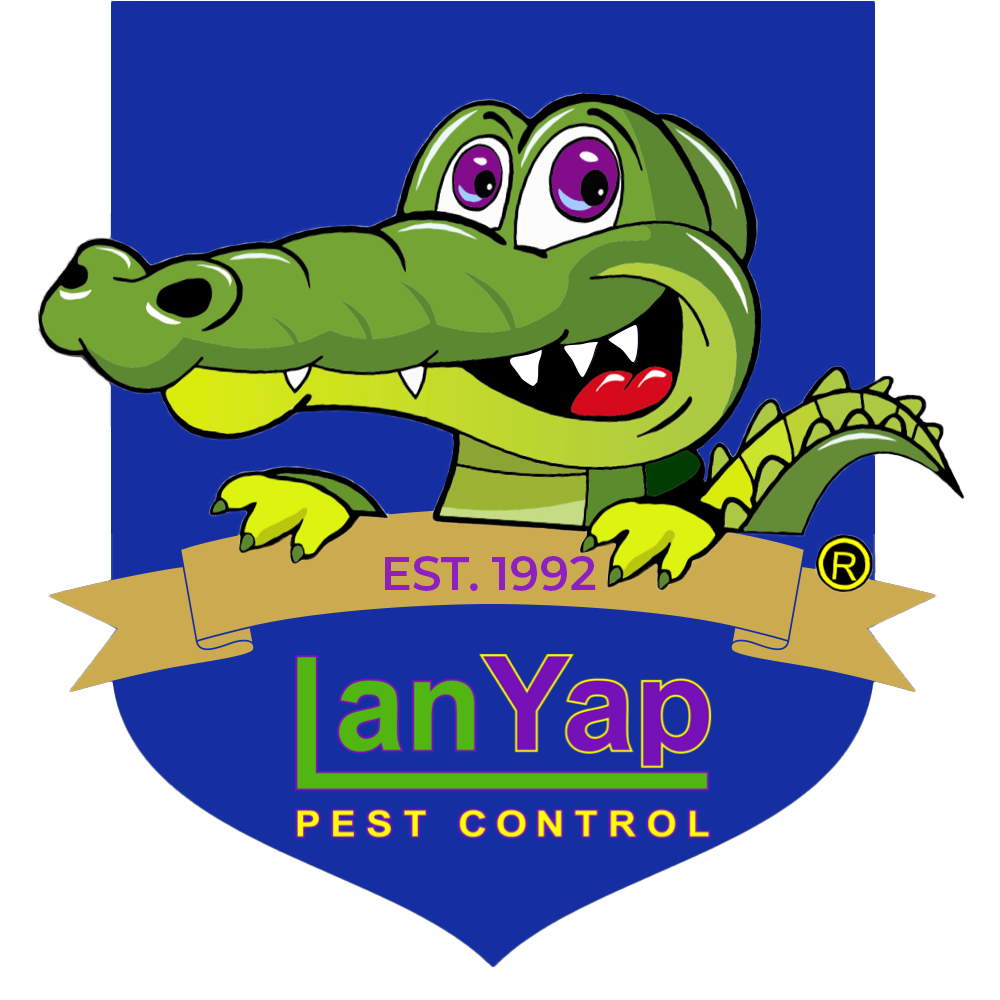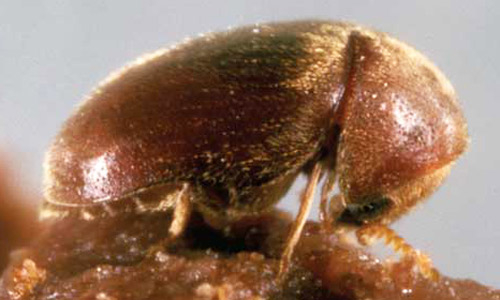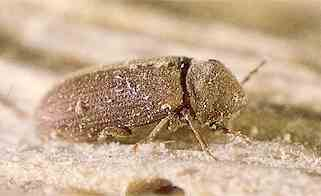Sawtooth Grain Beetle
Adults are small, about 1/10 inch long, slender, very flat, brown beetles. The thorax of the body has six sawthooth-like projections on each side, hence the name sawtoothed grain beetle. Because of the flattened shape, these beetles are able to work their way into packages of food that are apparently tightly sealed. The larvae are whitish, elongated grubs with brown heads. When full grown the larvae are 1/8 inch in length.
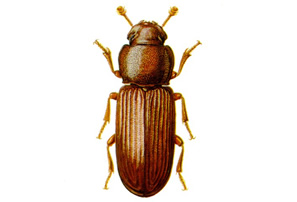
Cigarette Beetles
Adults: Cigarette beetles are quite small, measuring about 2 to 3 mm (about 1/8 of an inch), and are reddish brown. They have a rounded, oval shape and the head is often concealed by the pronotum when the beetle is viewed from above. The elytra (wing covers) are covered with fine hairs. When disturbed they often pull in their legs, tuck their head and lay motionless. They prefer to reside in dark or dimly lit cracks, nooks and crevices but become active and fly readily in bright, open areas, probably in an attempt to find refuge. They are most active at dusk and will continue activity through the night. Adults do not feed but will drink liquids. Cigarette beetles look almost identical to drugstore beetles but can be distinguished by two easily identifiable characters: the antennae of the cigarette beetle are serrated (like the teeth on a saw) while the antennae of the drugstore beetle are not and end in a 3-segmented club. The other difference is that drugstore beetle elytra have rows of pits giving them a striated (lined) appearance while those of the cigarette beetle are smooth.
Powder Post Beetles
Powder post beetles are so called because in high numbers they are able to turn the inside of a piece of wood into nothing more than a mass of fine powder. These wood-destroying beetles can do significant damage to log homes, furniture, wood floors and structural timbers. Powder post beetles are small (1/8 inch) and the adult beetles are seldom seen. Most of the life cycle is spent in the grub or larvae stage eating wood. Damage is done by the larvae, as they create narrow, meandering tunnels in wood as they feed. This stage can last between 1-10 years depending upon a number of factors; these include species of beetle, type of wood infested, age of wood, moisture content of wood and air temperature.
Varied Carpet Beetles
Adult varied carpet beetles are 1/16- to 1/8-inch long and generally oval in appearance. The wing covers meet at the rear end of he body in a smoothly rounded fashion with no apparent cleft. The backs of these insects are spotted with gray-yellow, brown and white scales, which form two bands across the top. The underside of the body is gray to yellow. The larvae are about 3/16-to ¼ inch long and wider at end of the body than the head. They are covered with a series of light and dark-brown stripes that run across the body. They have three dense tufts of bristles at the rear-end of the body that extend outward when they are disturbed.
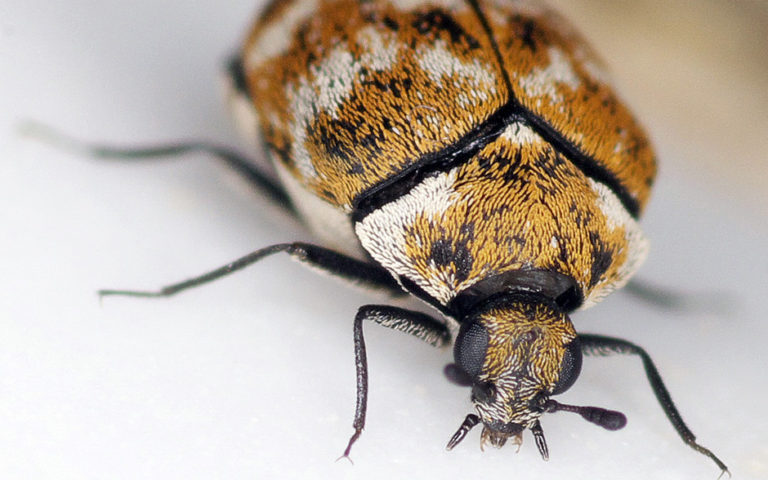
Black Carpet Beetles
The adult is 2.8 to 5 mm long, black to reddish brown and covered with short, sparse pubescence (Fig. 1). The first segment of the tarsi of the hind legs is much shorter than the second segment. The last antennial segment of the male is twice as long as that of the female. The larvae of the black carpet beetle, which may reach 12.7 mm in length, are very different from other carpet beetles’ larvae. They are elongate, carrot-shaped, golden to chocolate brown, and have a tuft of very long, curled, golden-brown hair at the tail end of their body.
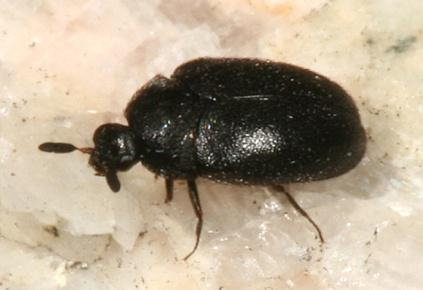
Flower Beetles
Adult bumble flower beetles are 12-16mm (7/16 – 5/8 inch) in length and 8-10mm (5/16 – 3/8 inch) wide. They have yellowish-brown or cinnamon-colored elytra with irregular longitudinal rows of small black spots, many of which may be rectangular. The head and thorax are densely hairy, as is the underside of the body, the latter being clothed with numerous white hairs. Legs are reddish-brown color. When captured, adults may emit a defensive chemical with a pungent chlorine-like odor.
